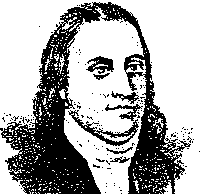Some Famous
Wolverhampton Names
by Keith Farley
Sir Richard Leveson
(1570-1605)
Serving as a volunteer under Sir. Francis Drake on the
Ark Royal in 1588, Richard Leveson took part in the defeat of the
Spanish Armada. In 1596 he was knighted by Elizabeth I after taking part
in the expedition in which his father-in-law, Lord Howard, attacked and
laid seige to Cadiz for two weeks, and in 1603 he was given the title
'Vice Admiral of the Fleet' for life. The same year he was sent to
Madrid as a member of the delegation which concluded the peace between
England and Spain.
Sir Charles Marston
(1867-1946)
The eldest son of John Marston (the founder of both the Sunbeam Cycle
and Motor Car Companies), he entered into the family business in 1885
and was eventually put in charge of the Villiers Cycle Components
Company in Villiers Street. This became the mainstay of Charles's
business interests and its success enabled him to indulge in his many
creative and charitable interests.
Sir Henry Hartley Fowler
(1830-1911)
A former Mayor of the Borough, he became an MP for the town in 1880.
He was instrumental in proposing the Wolverhampton Corporation Act which
was passed in 1891 and he was made the first Freeman of the Borough the
same year. In 1894, he became Secretary of State for India, a position
which saw him decorated with the order of the Grand Commander of the
Star of India by Queen Victoria.
John Wilkinson
(1728-1808)
Born in Cumberland, John Wilkinson or 'Ironmad Wilkinson' as he
became known, was one of the great figures of the early iron industry.
He built the first steam powered blast furnace at the Bradley Ironworks,
Bilston in 1767 and also helped in the construction of the 'Iron Bridge'
which was cast at Coalbrookdale. He was also a great friend of James
Watt and helped him with experiments which resulted in the development
of the steam engine. His business interests made him a very wealthy man
and at one time he offered to pay off the National Debt with his
fortune. When he died in 1808, an iron coffin, which he had designed was
used to bury him in.
Button Gwinnett
(1735-1777)

One of the signatories of the American Declaration of Independence,
Button Gwinnett lived in Wolverhampton between 1755 and 1762. He married
a local girl, Anne Bourne and in 1762 he moved to America. Election as a
delegate to the Continental Congress in 1776 enabled him to become one
of the fifty-six signatories of the Declaration.

Sir Charles Wheeler
(1892-1974)
The first sculptor ever to be elected President of the Royal Academy
of Arts, he was born in Codsall in 1892. He first studied at the
Wolverhampton School of Art under Robert Emerson and later at the Royal
College of Art. Examples of his work can he seen addorning many London
buildings including the Bank of England, India House and South Africa
House. He also sculpted the statue of Lady Wulfruna which stands outside
St. Peter's Church in Wolverhampton.
Jonathan Wild
(1683-1725)
Self-penned Chief Thieftaker General of Great Britain and Ireland,
Jonathan Wild was born in Wolverhampton in 1683 and lived here until
1709 when he moved to London. He became famous as a dealer in stolen
property and later as an organiser of gangs of thieves, by informing on
certain criminals the authorities were prepared to tolerate his
activities (hence the nickname). His past eventually caught up with him
and he was executed on May 24th 1725.
Sir Charles Villiers
(1802-1898)
A Member of Parliament for sixty three years, Charles Pelham Villiers
holds the record for being the longest serving MP in Parliamentary
history. From 1835-1885, he sat as MP for the single constituency of
Wolverhampton and then from 1885 until his death in 1898 as MP for
Wolverhampton South (Bilston).
Dame Maggie Teyte
(1888-1876)
One of the great opera singers of the 20th Century. Her father, owned
the Old Still Inn in King Street, Maggie was sent to the Royal College
of Music and later to Paris to study under Jean de Reszke. In 1908 she
was selected to sing the title role of Melisande at the Opera de Comique
in Paris, a role which was effectively the beginning of an opera career
which lasted for nearly sixty years.

 |
Return to Lives
of Local People |
|